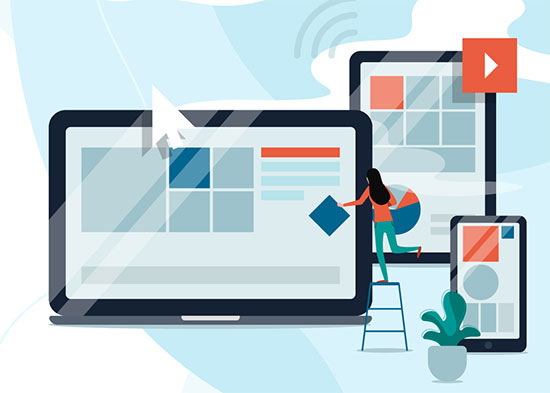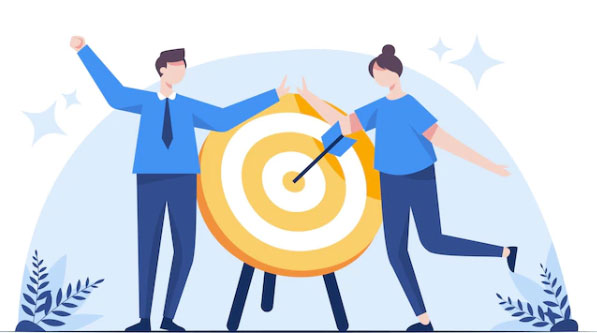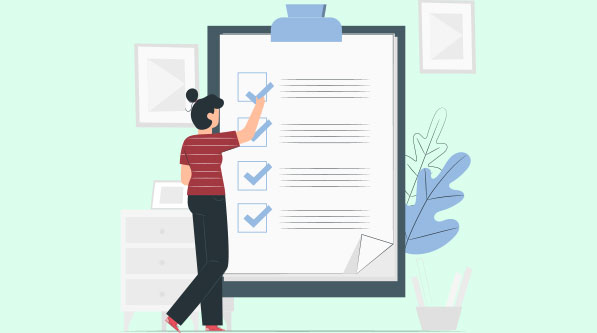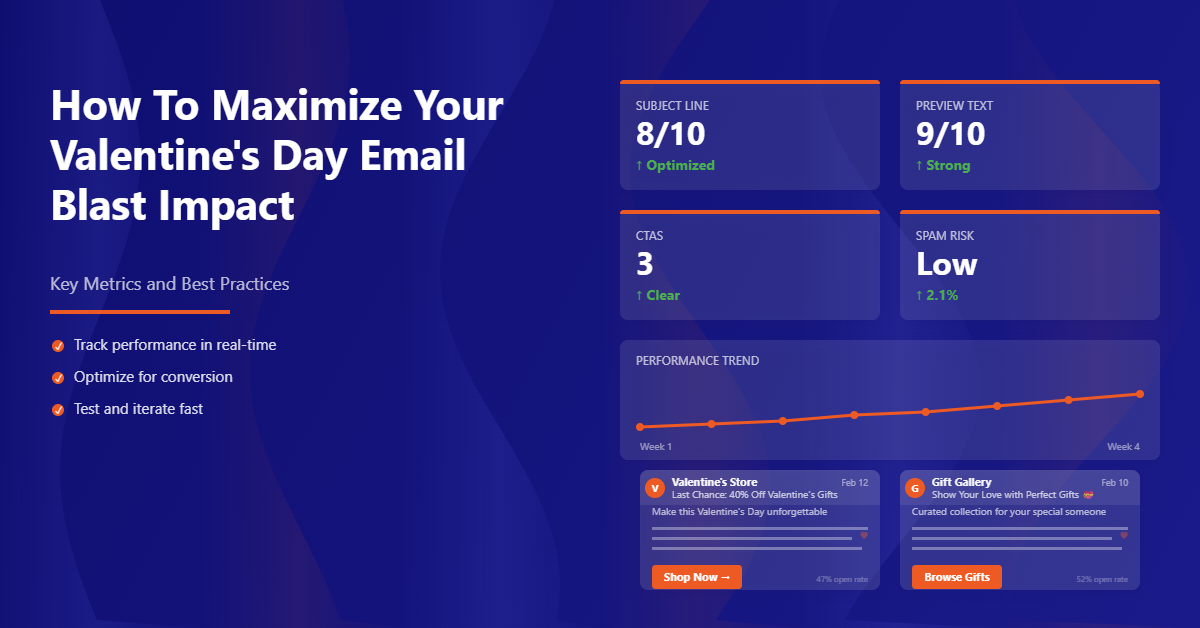If you’re a small business owner, you probably already know the importance of having a plan for your email marketing strategy. Without one, you could miss out on revenue and opportunities that could lead to success. If this sounds like you, then this guide is for you!
To make email marketing work for your business, you don’t have to be a seasoned expert. But it takes some time and effort.
This guide covers everything from deciding what kind of email marketing funnel works best for your audience to choosing the right platform for your campaign and sending emails people want to read. This small business email marketing strategy guide will also help you get started and set yourself up for success.
What Is An Email Marketing Strategy?
An email marketing strategy is a plan for how you will interact with your customers via email. It’s about understanding your audience, what they need, and how you can provide them with an experience that will increase your company’s bottom line.
It’s essential to have a small business email marketing strategy in place because it helps you identify the best way to reach your audience and enables you to understand the best ways to engage them.
These email marketing strategies should be based on three factors:
- Who is your audience (their demographics, interests, and behaviors)
- Why they’re interacting with your brand (what do they hope to accomplish by doing so)
- How can you use the data from both of those things together to create a more personalized experience
Why Email Marketing Strategy Is Important For Small Business?
Email marketing is essential for small businesses because it’s one of the most efficient ways to reach a large number of people quickly and easily.
Email can inform customers about new products, services, and promotions that you have running at your business; it can also be used to collect information about them (like their name, address, and phone number). This lets you track how many customers buy from you and how often they come in.
Email marketing also works well because it’s easy to customize messages based on who they’re sent out to. You can target specific groups of people based on their interests or where they live; this helps ensure that your message gets sent only to those who are interested in receiving it!
Common Challenges Of Small Business Email Marketing
Getting your email marketing right when you’re a small business can take time and effort. Here are five common challenges you might run into when trying to get the most out of your email marketing efforts:
Your list is too small.
It’s also one of the easiest to overcome. You can increase your list size in two ways: by collecting new email addresses and by converting inactive addresses into active ones.
One way to collect new addresses is to offer a discount or coupon for signing up for your email list. Another way is to use an opt-in form on your website, allowing visitors to sign up for your list without leaving the page they’re browsing.
The second method—converting inactive addresses into active ones—is slightly more complicated but still pretty straightforward. To do this, you’ll need some way of identifying people who haven’t opened your emails in a while (e.g., using software that tracks opens and clicks) and then sending them an email asking them why they aren’t opening or clicking anymore and offering them an incentive if they respond positively (e.g., free shipping).
Your emails aren’t delivered.
If you’re having trouble with your emails not getting delivered, there are a few things you can do to troubleshoot the issue.
First, check to ensure that spam filters aren’t blocking your email address. You can enter your email address into an email checker like hunter.io. If it’s blocked, you’ll get an error message telling you so.
Next, try using a different sender domain name (i.e., @targetbay instead of @gmail). This will help ensure that the message is delivered entirely rather than split up into multiple messages.
However, there are so many ways you can improve your email deliverability, do your best to improve them. After all, if your emails end up in spam, what’s the point of running email campaigns?
Finally, if none of these steps work for you and your email is still being delivered to spam, we recommend reaching out to the support team.
Your emails aren’t getting opened or clicked on enough.
To fix this, you need to know why your emails aren’t getting opened or clicked on enough. There are many reasons for this problem, but here are some of the most common:
- You’re sending emails too frequently. People don’t want to be bombarded with emails from brands they’ve never heard of before.
- Your subject line isn’t engaging enough. Make sure you’re making it clear what benefits people will get from reading your email, and try to make it specific to them (like mentioning their names).
- You aren’t using an effective call-to-action in your emails. This could be a button that says “Learn More” or something more specific like “Click Here To Learn More.”
Not segmenting your list.
If you aren’t segmenting your list, you’re missing out on a huge opportunity to get more bang for your buck with email marketing. Segmenting is simply the process of dividing up your email list into smaller groups that share common traits or interests.
You must ensure you’re using every opportunity to engage with your customers and give them the best possible experience. Segmenting your email list helps you do this by allowing you to send tailored messages to different segments of your audience.
You can use segments based on location, demographic information, past buying behavior, customer subscription, and more. The more specific you get, the better!
Too much time is spent crafting emails.
There are a lot of challenges that come with small business email marketing. One of them is the fact that you spend way too much time crafting emails.
Of course, making your emails look good and clear is essential. But spending too much time on them can become a significant time sink and prevent you from doing other, more important things.
If this happens to you, try using pre-built email templates and pre-written content when possible. If you have an email template that works well for your business, use it! Don’t be afraid to use canned responses —ensure they fit in with your brand’s style and tone!
Not enough time to test different devices and optimize them
Many businesses fall into this trap because they need more resources to devote to testing, so they don’t consider users’ needs regarding responsive design. This can result in serious consequences for your brand’s reputation.
To avoid this problem, you must ensure that you have the right tools to test on multiple devices and offer an optimized user experience.
Suppose you need more time or resources for testing. In that case, it’s best to use a responsive design that automatically adapts to fit the screen size and resolution of the viewing device—which is better than sending a different version of your message to each device. For example, email marketing software like BayEngage has responsive email templates that automatically fit every device.
You’re not sure which platform will best suit your needs.
There are many options out there, so it can be hard to decide which is best suited for your business. Before you start shopping around for an email marketing solution, take some time to think about what kind of business you have and what kinds of features you want the platform to offer.
If you’re unsure where to start, here’s a quick guide:
- Choose a platform that allows you to create and send highly personalized emails.
- Make sure the email marketing software has built-in analytics so you can see what your customers are responding to best.
- Ensure the software integrates with other platforms and tools you use so that all of your marketing efforts work harmoniously!
Benefits Of Email Marketing Strategy For Your Small Business
Email marketing is one of the most effective ways to get your name in front of a large group of customers. It’s also a great way to build relationships with current clients and keep them coming back for more.
Here are ten benefits of email marketing for your small business:
1. Email Marketing Is Affordable
Email marketing is one of the least expensive forms of advertising and is also one of the most effective. You can get started with a free email marketing platform like BayEngage, which will allow you to send messages to up to 200 subscribers for free.
If you have more than 200 subscribers, they’ll charge you $10 per month per 200 subscribers—which is still relatively affordable!
Check out BayEngage pricing!
2. It Has A High Clickthrough Rate
Email marketing is one of the most effective ways to reach your target audience. And it’s not just that people are more likely to open your emails but also more likely to click on them!
This means that you’re reaching out to your customers in a way that they find engaging and exciting. They’re so interested in what you have to say that they’re taking action by clicking through on links in the email itself.
Learn more about open rates and click-through rates on email campaigns!
3. It Can Be Personalized
One of the best things about email marketing is that it can be personalized—something other forms of advertising can’t do as well. You can customize your messages based on who is receiving them, which allows you to engage with your customers in a personal way and really connect with them on an emotional level.
Some businesses even include images and Gifs in their emails, so their customers feel they know who’s talking to them!
4. It’s Easy To Track The ROI Of Your Campaigns
The most important thing about email marketing is that it’s easy to track your ROI. You can see how many people opened and clicked on each link, as well as how many people bought from the links you sent them and how much revenue they generated.
All of this data will help you determine what types of campaigns and offers work best for your business, so you can keep sending them out regularly.
5. It Can Be Used For Anything From Promotions To Newsletters And More
The best part about email marketing is that it can be used for anything from promotions, newsletters, product updates, event invitations, webinar invites, and even surveys. For example, you could easily send an email blast promoting a special Notion discount to your entire subscriber list.
If you have a product or service that needs promoting, this medium is perfect for getting the word out quickly and effectively without spending too much time or money on it!
6. It’s Quick To Set Up And Send Out A Campaign
Email marketing can be a powerful tool for your small business if you know how to use it correctly. If you don’t have the time or the budget to do traditional marketing, then email marketing is a great alternative.
The best part is that starting an email marketing campaign takes little time and money because you can use free or pre-built templates. You don’t have to pay someone else to create them for you, either!
7. You Can Automate The Process
You don’t have to spend hours writing email after email if you use an email marketing tool like BayEngage, which allows you to automate the process.
This means that once you create an email template, you can send new messages without writing them manually each time. This is great for busy business owners who don’t want to spend their time manually sending emails out.
8. It Helps You Create Awareness About Your Brand/Product
Email marketing is an easy way to let potential customers know about your brand or business and what it offers them.
You can use an email list to send periodic updates about new products, special offers, or events happening at your company—and then follow up with more detailed information as needed.
9. It Allows You To Build Relationships With Customers On A Personal Level
Email is a very personal form of communication, so when you send an email to your list, it feels more like you’re addressing someone personally rather than just sending out a generic message.
Plus, if you’re doing it right, you should send relevant (and useful) messages to the people on your list—so they’ll appreciate getting those emails in their inboxes.
10. It Allows You To Send Targeted Messages
Email marketing campaigns allow you to segment your customers into different groups and send them different messages based on their group.
This means that if you have a customer who has bought from you before and is not currently spending money with your company but has expressed interest in your products in the past, you could send them an offer for a coupon or free shipping.
How To Create Email Marketing Strategy For Your Small Business?
Are you ready to create an email marketing strategy for your small business? If so, here’s a roadmap for how to do it:
1. Get Clear On Your Goals
You can only build a strategy by knowing your goals. Do you want to grow your list, increase engagement, and get more sales? Do you want to keep up with the competition? Are you trying to increase brand awareness? Getting clear on what you want from email marketing will help you prioritize different strategies and tactics.
2. Understand Your Audience
Researching your audience is vital for any marketing campaign, but email marketing is crucial. You need to know who these people are, what they like, what they don’t like, and how best to reach them—and then make sure that your emails are designed in a way that appeals directly to those preferences.
3. Build Your Email List
Your email list is the lifeblood of your business, so it’s important to build it as quickly as possible. When you’re starting out, the best way to build your list is by offering free content on your website and social media. This could be anything from a blog post to an ebook.
Once you’ve built up a good-sized list, you’ll want to ensure that it’s current and up-to-date. If someone has asked to be removed from your list or no longer uses that email address, remove them immediately! That way, you won’t be sending messages out into the ether where they might never be seen again.
4. Set Up An Email Marketing Platform (If You Don’t Already Have One)
One of the easiest ways to create an email marketing strategy for your small business is by using an email marketing platform like BayEngage.
These platforms allow you to easily create and manage a mailing list, send out newsletters or updates with minimal effort, and track their activity on them so that you know what kind of content they like best and how often they open their messages from you.
5. Write Your First Campaign And Send It Out!
Once you’ve got your list of recipients and a clear idea of what you want to say, it’s time to start writing your actual email.
You should first think about how you will structure the content, so it flows well for your readers. You can use bullet points, numbered lists, or paragraphs to get your point across, but whatever you choose, make sure it’s easy for people to read and understand.
Next, write a subject line that will catch people’s attention! Remember that this is the first thing they’ll see when they open their inboxes or read their emails on their phones. So make sure it’s interesting enough that they’ll actually open it up and read the rest of your message.
Finally, write an email body that tells them exactly what they need to know—plus a little bit more! You want them to leave feeling like they learned something new or had an enjoyable experience reading through your content.
6. Determine Which Metrics You’ll Use To Measure Success And Set Up A Reporting System For Them
Your email marketing strategy will be more effective if you measure how well it works. Set up appropriate metrics to track before you launch the campaign so that when things start happening (or not happening), you’ll know where to look for clues as to what needs adjusting or changing.
7. Analyze The Results Of Your Campaigns And Find Out What Works And What Doesn’t
You need to know what works and what doesn’t so you can improve your strategy over time. If a particular campaign isn’t performing well, ask yourself why. Was it the subject line? The body copy? The image? Once you’ve determined the source of the problem, make changes to your next campaign and continue to test until you find a winning formula.
8. Iterate And Improve Your Strategy Over Time
Once you have a successful strategy in place, keep testing new things so your emails stay fresh and exciting for your subscribers. By constantly iterating on your current approach, you’ll be able to keep up with consumers’ changing tastes and preferences while keeping them engaged with your brand!
9. Make Sure You’re Following The Rules Of GDPR Compliance As They Become More Stringent In The EU
Small businesses must understand how this new regulation affects them and their customers. For example, if you collect personal information from users (like email addresses), you must ensure that your website or app complies with GDPR standards. Otherwise, you could face hefty fines from European regulators or even see the service shut down completely.
While complying with this new regulation might seem daunting at first glance—especially for smaller companies that don’t have full-time staff explicitly dedicated to compliance issues—it’s pretty straightforward once you know where to start!
What Is The Best Email Marketing Software For Small Business?
If you’re looking for email marketing software that’s affordable, user-friendly, and easy to use, BayEngage is the right choice for you. It provides all the tools you need to create professional emails and newsletters, with a simple drag-and-drop interface that makes it easy to set up campaigns and track results.
BayEngage also offers 350+ free and responsive email templates—you can change colors, fonts, logos, and more—so your emails will look great no matter what kind of content you include in them.
BayEngage also allows you to import contacts from your existing platform. It also offers 24×7 email, chat, and call support that can help you grow your business and improve customer engagement.
You can even create an autoresponder series—a series of messages that are sent in order when someone subscribes to your list—and schedule them to be sent out on specific days or times. You can also use BayEngage for A/B testing, which allows you to test different versions of an email to see which one performs better.
Best of all? BayEngage is free to get started!
Start Planning Your Email Marketing Strategy!
So, you’ve got a small business and want to get the most out of your email marketing strategy.
What’s next?
Well, there are a few things you need to consider before you dive in headfirst.
First, you must ensure you have the right tools for the job. Email marketing is not something that happens overnight—it takes time and effort to build up your list and create a pipeline of content that keeps your subscribers engaged and coming back for more.
Secondly, you must consider how much time and effort you will put into managing your email marketing strategy. It’s not as simple as just sending out an email every week or month; it’s an ongoing process of building relationships with your customers, so they feel like they know you personally and want to hear from you again.
And if you don’t have time to carry out the marketing efforts to run successful email campaigns, you can always go get help from an email marketing agency. An agency usually has a team of email marketing experts that will take care of everything from scratch!



















